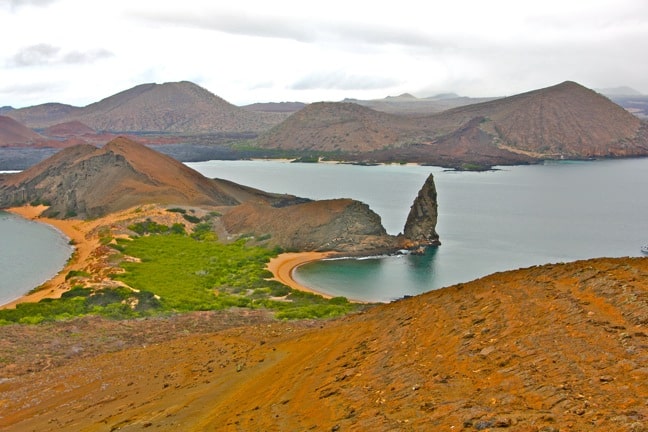Visiting the Galapagos Islands is like stepping into one of those BBC nature documentaries narrated by Sir David Attenborough.
In this archipelago, which is located 600 miles off the coast of Ecuador, you can swim with sea lions, walk alongside the world’s largest tortoise, and explore dynamic, dramatic landscapes utterly unlike any other place on Earth.
Due to their remote location, the Galapagos Islands remained untouched for millions of years before human discovery.
The most famous early explorer of the archipelago was Charles Darwin, who developed his theory of evolution by natural selection after his visit to the Galapagos in 1835.
Because approximately 97% of the archipelago is protected as part of the Galapagos Islands National Park, they still remain relatively untouched today.
This is truly a nature-lovers’ haven, where unusual endemic plants and animals have adapted genetically in order to thrive.
In fact, the Galapagos Islands is such a spellbinding melting pot of scientifically significant species that it was named the world’s first UNESCO World Heritage Site in 1987.
The archipelago has been capturing the imagination of travelers for centuries now, and some 200,000 people make the journey each year. But how much do you actually know about these 19 exceptionally biodiverse islands?
Read on for 21 fascinating facts about the Galapagos Islands, including trivial tidbits on the wildlife, places to go, things to do, and lots of practical info.
READ MORE: 70 Cool & Weird Animals Around the World
Places to Visit in the Galapagos Islands
1. The Islands
The Galapagos is an archipelago of 19 islands in the Pacific Ocean. It’s located on a junction where 3 tectonic plates meet, and 13 of the islands are volcanic.
The archipelago is actually a result of numerous volcanic eruptions over millions of years (including 13 in the last century).
The oldest island, Espanola, is estimated to be around 3.5 million years old, but many of the others are still forming. The youngest island is Fernandina, at a youthful 1 million years old.
Each island has its own unique landscapes, wildlife, and activities, and only 5 of them are actually inhabited by people.
Small communities are dotted across San Cristobal, Santa Cruz, Isabela, Floreana, and Baltra. The rest of the islands are completely devoid of human presence.
By boat, you can visit uninhabited islands like Bartolome…
Click Here to Read the Full Original Article at Green Global Travel…
